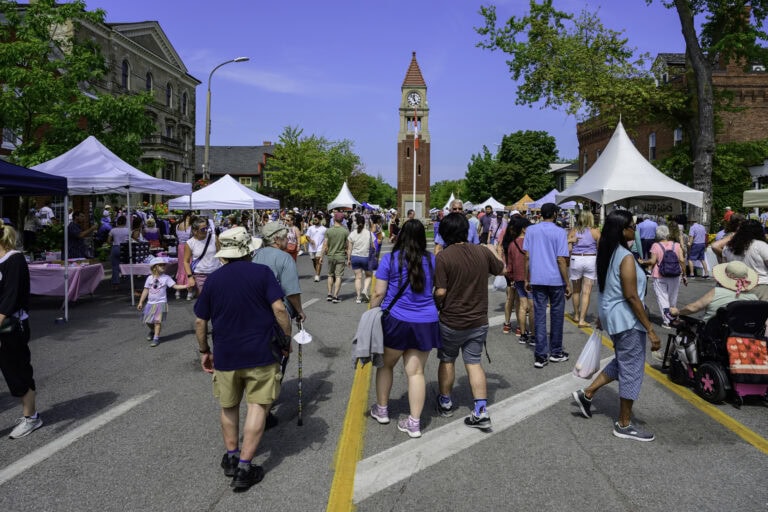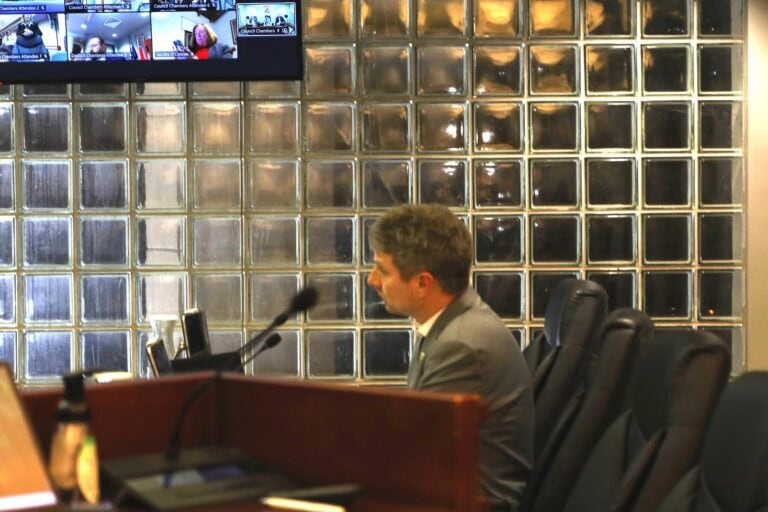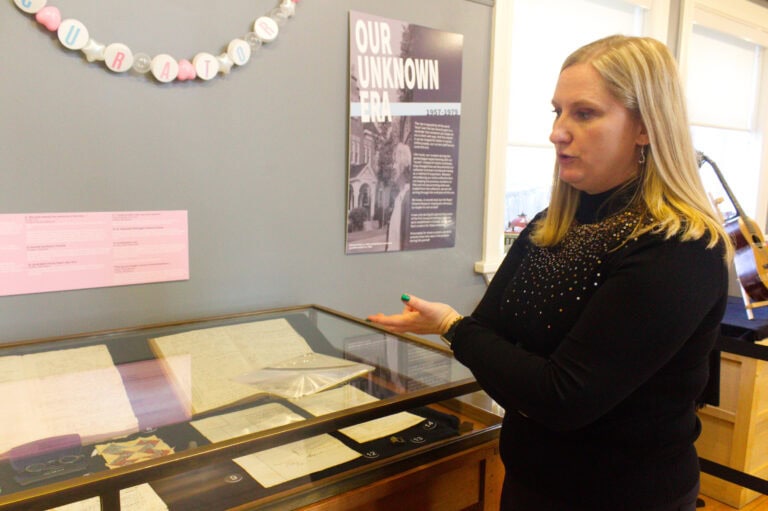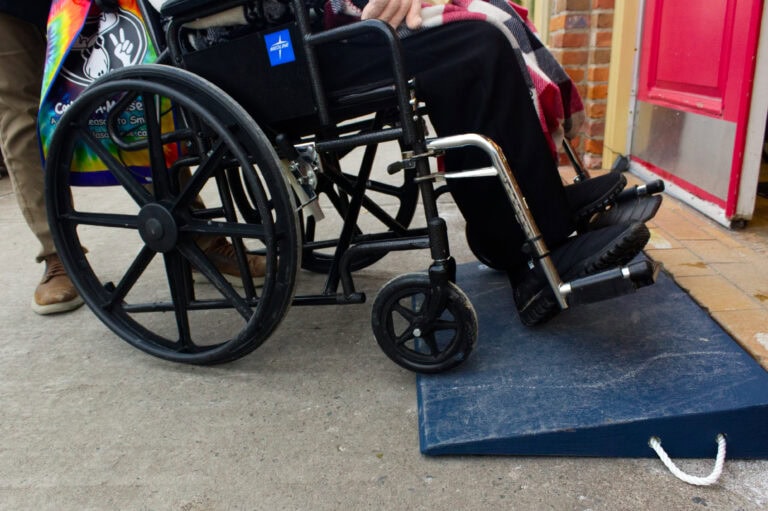Threats, criminal behaviour won't be tolerated, senior officer says. But Charter ensures protesters can have their say
Editor’s note: This is the second part of a series focusing on the carriage protests in Niagara-on-the-Lake.
After three years of protests, tensions are rising between Niagara-on-the-Lake’s pro- and anti-carriage groups, both in-person and on social media, says a senior Niagara Regional Police officer.
“The rhetoric online on social media, the temperature is starting to rise,” Insp. James McCaffrey said in an interview.
“And it’s getting to the point where people are coming very close to committing some criminal acts on social media. There’s some vague threats. Some are even inciting criminal behaviour. And that’s not going to be tolerated,” he said.
“We have gone to visit a few people already to warn them about what they are doing online,” he said, adding, he worries about “vigilante behaviour of some kind.”
The anti-carriage group, At War for Animals Niagara, says it plans a major protest in NOTL this Sunday, Aug. 23 at 12:30 p.m.
McCaffery said police are trying not to escalate the situation by laying charges, but that charges will be laid if there is criminal behaviour. One man, a carriage customer, was charged in July with assault and theft after an incident involving protesters.
“If the evidence leads to the point where I believe enforcement is the best option for us, charges will be laid. Each individual incident that gets reported to us will be investigated,” McCaffrey said.
Police are trying to remain neutral and maintain the peace and public safety, he said. “We’re not turning a blind eye to what’s going on. We recognize that this is an ongoing disagreement.”
It’s been frustrating for both sides and “I know the community is getting very concerned as well. We see the behaviours of everybody involved and we’re continuing to educate or use discretion to best manage the situation. We don’t want it to escalate and we’re still just basically trying to preserve the peace.”
His advice to both sides is to come to the negotiation table.
“And I really want the online rhetoric to stop. The temperature’s rising too much. We really don’t want to have to put our resources to go into people’s houses to tell them to stop inciting violence,” he said.
He also worries about people taking the law into their own hands. “We’re not going to tolerate that. But we’ve got to start coming up with some resolutions at the negotiating table.”
When it comes to online comments that might constitute a crime, police need to prove who was behind the keyboard, which can be challenging.
“We would interview the person to see what they have to say about it. But for the most part, we’re hoping that we can still rely on not resulting in criminal charges. We don’t want that. That’s going to escalate the situation significantly. That’s a last resort right now.”
Many NOTL residents, along with Sean Sentineal, whose family operates the carriage business, have accused police of ignoring legitimate crimes of harassment by the protesters. It’s been affecting business as some people shy away from the carriages.
McCaffery said it’s not an easy course to navigate.
“We do recognize that the businesses have a lawful right to exist and operate. We also recognize that the Charter of Rights and Freedoms gives these protesters the right to peaceful assembly,” he said.
Defining peaceful assembly is “a challenge. We look at different sections of the Criminal Code, we also resort to case law to determine what is defined within the parameters of peaceful assembly,” he said.
The courts have said the protesters have the right to be loud, he noted.
“A protest does not cease to be peaceful simply because the protesters are loud and angry. So there are parameters that we have to take a look at.”
He points to the case of a man arrested for loudly protesting at the municipal offices in Fort Erie. He was eventually removed from town property and charged with trespassing.
“He tore up the trespass notice and he decided to challenge that issue. It went all the way to the Court of Appeal,” Ontario’s highest court.
Like the protesters in NOTL, “He did use a loud megaphone, he did go back and forth. He was very loud, very angry. He is a very intimidating man. And there’s a lot of expression in here about how people felt very intimidated by him, very similar to what we’re hearing in Niagara-on-the-Lake.”
He said “a person’s subjective feeling of disquiet, unease and even fear” is not enough to give them protection from the protesters.
The Fort Erie protester “was very loud, he was very angry, he was very abrasive. But the courts have found that that is still considered peaceful protest. So we have to take a look at that. We can’t just lay charges because people are offended by the behaviour.”
While there are town noise and sign bylaws, they don’t trump the Charter, McCaffrey said.
“The Charter of Rights and Freedoms is the ultimate law of the land. It guarantees the freedom of peaceful assembly. So you are allowed to peacefully protest, you can use signs to peacefully protest for the purposes of communicating information. Part of our democracy, it depends upon the free and open debate of public issues,” he said.
“What they’re doing is allowable, it’s guaranteed under the law, they can use signs. They can use a megaphone as well.”
As for town bylaws regarding signage, the Charter protects the protesters, he added.
“That’s my interpretation, that they are allowed to do it according to the Charter. You have to look at the intent of why they are there with the signs. The intent is to provide info for the purposes of obtaining or communicating information.”
However, Niagara-on-the-Lake Lord Mayor Betty Disero has a different opinion.
Last month The Lake Report asked Disero if a person has a right to break bylaws if they are protesting. This came after a food truck operator refused to shut down his business after the town told him to stop operating because he was violating several town bylaws.
Disero responded that nobody can break town bylaws, even as part of a protest.
The same question was asked July 28 regarding the carriage protests.
“I stand by my statement that they may have the right to protest, but everyone is expected to adhere to town bylaws,” Disero said.
McCaffery said it comes down to what police think is going to help resolve the issue and he doesn’t think enforcing town bylaws will help defuse the situation.
“If I were to lay one of the persons with a town bylaw (charge), is that going to resolve the issue here? No, that’s a small facet in this. I’m trying to look at the greater good to come up with a resolution that benefits the town, Niagara-on-the-Lake’s many visitors,” McCaffery said.
There have been complaints the protesters are intimidating carriage drivers, but he said intimidation is subjective.
“Granted, some people feel intimidated by the protesters, but there has to be evidence to support that. Just the mere fact that you’re saying you feel intimidated — I understand that — but to date, there has been no evidence of violence that I can concur with this threat that (people feel).”
Businesses have a right to operate, but, again, the right to protest overrides that, he said.
“The court recognizes the mere fact that this affects your business does not supersede the person’s right to peaceful expression,” he said, once again adding that police are referring to case law in coming to that conclusion.
While acknowledging that either side in the dispute could launch a lawsuit against the police department, he said that “doesn’t come into the equation” when laying charges.
“If there’s sufficient grounds to lay a charge, then charges will be laid. If a breach of the law occurs, it’s got to be dealt with as well, whether it be through discretion, education or enforcement.”
If a lawsuit ever is filed, it would be up to the courts to decide if police acted maliciously toward one group, he said.
The police are trying to remain neutral in the dispute, he said. “We’re not taking a side on this, we have to balance the rights of everybody involved. And I recognize that this does not make everyone happy.”
He said he was out “walking the beat” in NOTL on July 28 and one big question he got from people about the protests was, “How is this considered peaceful?”
His answer: at times peace can be a pretty subjective term and previous court cases have shown that pretty much anything short of violence or threats of violence is considered peaceful.
“It’s not what the layperson would define as peaceful. It goes far beyond that,” he said.
“Threats of violence or violence do not have the Charter’s protection. But being loud, being abrasive, being in your face is considered part of peaceful assembly. It’s guaranteed under section 2(c) of the Charter.”
Officers working the protests are concerned that after three years no progress is being made, McCaffrey said.
“I’m concerned that we’re not moving forward. We need to talk about the core issues here. There’s got to be a resolution out there that would perhaps be better for the town and everybody else involved.”
He said he’s tried to get both sides to the negotiation table, without success.
One idea that has been floated is the town leasing to the Sentineals the part of the road where the carriages operate. McCaffery said that’s an option, but noted it’s not foolproof.
The section of roadway would be a small area in which the protesters would not be allowed, “but once the horses are outside of that small, defined area, we’re right back where we were before.”
And protesters are allowed to use the middle of the road and impede traffic, because it’s public space, he added.
He pointed to an incident in Toronto where 30 or 40 protesters shut down the Bloor Viaduct.
“They completely went on the road,” he said. “The police officers came in and tried to negotiate a resolution to the situation. They weren’t getting anywhere. So ultimately, I believe they were all arrested that day and taken from the scene.”
They were charged with mischief, but the charges were all withdrawn immediately when they went before the court, he said. “The courts did not believe it was in the best interest of the public to prosecute them. So, again, negotiation is sometimes a way to try to resolve a situation.”
McCaffery said there have also been complaints from protesters about the carriage drivers.
“So there is a lot going on behind the scenes,” he said.
“We are aware of what’s going on and we will follow up with it. We may not necessarily lay charges because that’s not always the best way to resolve an issue. We’re still going to rely as much as we can on education and discretion.”
He said police “continue to consult with the Crown attorney’s office on a regular basis” about the NOTL protests;
While it’s fair to say that these are sort of uncharted waters, he said it’s not a Niagara-specific issue and that horse carriage protests have occurred around the country and beyond.
Sean Sentineal said even if the carriage business were to close, he doesn’t think the protesters will go away.
“We’ve been doing business here for 30 years without an issue or a problem. So I’d hate to see town council and the mayor label us an issue, because I don’t think it’s just us, I think it’s the town’s issue,” he said.
“If we are gone tomorrow, these people are still gonna be here. They yell at people eating meat on patios. They like the attention they get down here. We have millions of tourists that typically come through in a summer that they get to talk to and get attention from. So I think even if we’re gone, they will still be here. For sure.”










